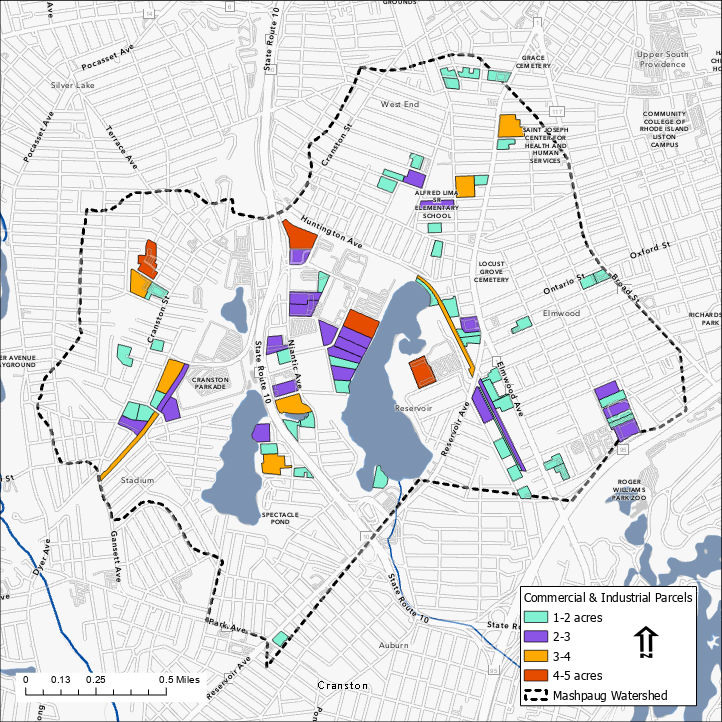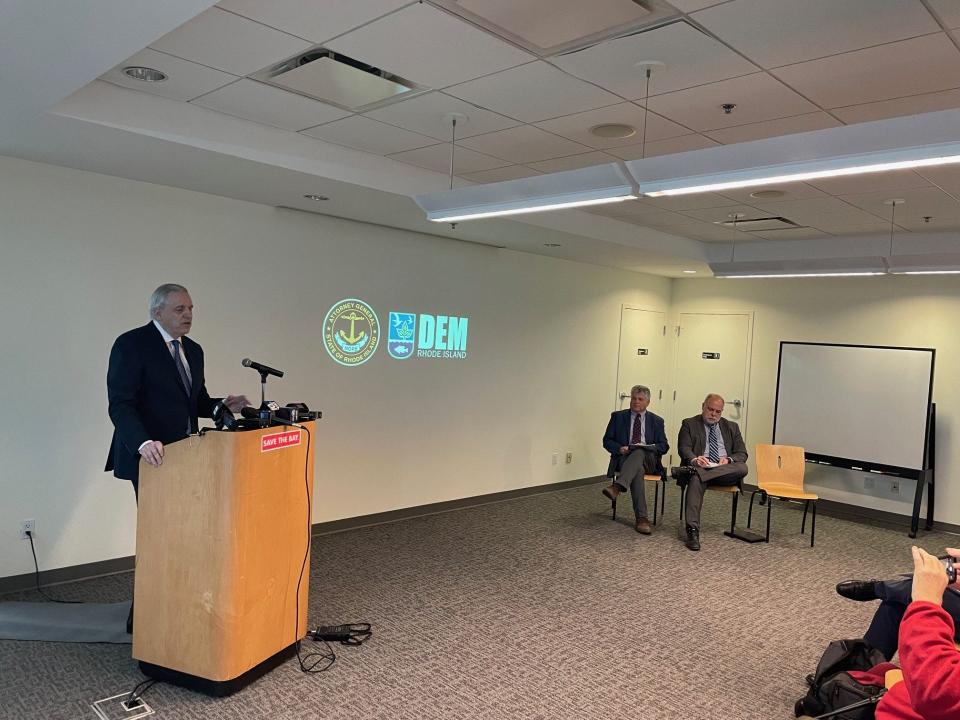'We're serious': AG's office, DEM using a new approach to protect RI watersheds
PROVIDENCE – Some 70 businesses in Providence and Cranston would be forced to control their stormwater runoff under a plan by state authorities to stamp out toxic algae blooms in the Mashapaug Pond Watershed.
Attorney General Peter F. Neronha and Department of Environmental Management Director Terrence Gray on Wednesday announced the novel effort to clean up Mashapaug, Spectacle and Tongue Ponds, which have been plagued for years by excess nutrients that have fueled the growth of cyanobacteria, or blue-green algae, plant-like organisms that can pose a threat to humans and animals.

The announcement at the offices of Save The Bay was heralded by environmental advocates who have long called on authorities to address pollution in the heavily developed watershed, which connects to the ponds in Roger Williams Park and eventually discharges into Narragansett Bay.
“No matter who you are or where you live, you have a right to clean water,” said Save The Bay executive director Topher Hamblett.
Plan would address properties developed before state stormwater rules took effect
The commercial and industrial properties that would be affected by a new permitting system that the DEM will develop are at least 1 acre. All predate the implementation of state stormwater regulations in 1993, meaning they are not currently required to control runoff from rain and snowmelt that washes bacteria, phosphorous, oils, heavy metals and other pollutants into the watershed and, said Neronha, have forced the closure of one or more of the ponds 20 times since 2011.
“And not for a day or two,” he said. “These are closures that go on for months at a time.”

The move by the Attorney General’s Office and the DEM to take action on stormwater against businesses that are grandfathered in under the law is unprecedented in Rhode Island. Authorities would use a little-known clause under the federal Clean Water Act known as “residual designation authority” to force the businesses to take corrective action now.
The U.S. Environmental Protection Agency is using the same authority to force stormwater improvements in the Charles, Mystic and Neponset river watersheds in Boston. The EPA effort, which is moving forward after the agency granted a petition from the Conservation Law Foundation in 2022, is serving as a model for what will be undertaken in Rhode Island.
More: A 2.2-mile-long tunnel is being drilled in RI. Where is the debris going?
The Providence office of the CLF in 2018 filed a similar petition for the Mashapaug Pond watershed with the DEM, the enforcement authority for the Clean Water Act in Rhode Island. But changes in the watershed were never implemented.
Gray said staffing constraints were one roadblock and expressed optimism that a wave of hiring at the DEM in recent years will get the new effort moving. He also said that the novelty of the residual designation process was also a challenge. The work being done in Massachusetts is helping on that front, Gray said.
James Crowley, staff attorney for the CLF, said he understood DEM’s cautious approach.
“This was something new to them, so they wanted to do more work looking at the pollution and figuring out what the permitting would look like,” he said.
Effort will pick up in coming months
The first step to breathe new life into the effort has already been taken with a new petition filed by Neronha’s office requesting the DEM take action in the Mashapaug Pond watershed. The DEM has 90 days to respond, but Gray said the agency has already agreed to approve the petition. Development of a stormwater permit for the affected businesses in the area will follow this spring.
Both Neronha and Gray said they don’t want to require businesses to invest in expensive solutions. Rather, addressing the stormwater problems could be as simple as clearing leaves from storm drains so runoff is captured in underground pipes rather than running off into the ponds. Other alternatives could include sweeping road salt and dirt from sidewalks and parking lots.
Business owners may also look at storing rainwater in retention ponds, rain gardens or other forms of so-called green infrastructure.
“It is a balance between ensuring that our environment is clean and safe and ensuring that the kind of commercial activity goes on in these areas that residents need,” Neronha said.
The DEM will also open discussions with city officials in Cranston and Providence about expanding concrete infrastructure designed to catch stormwater. Gray said he plans to talk to the Department of Transportation about moving up improvements to the stormwater system on nearby Routes 6 and 10.
In 2015, when he was U.S. Attorney for Rhode Island, Neronha joined with the DEM to force the DOT to step up maintenance of storm drains on state roads to stop polluted runoff from reaching watersheds. That consent decree helped lead to agreements with Providence and Warwick on stormwater controls.
Gray said he hopes the new effort will have a similar effect.
“This should send a signal that we’re serious and we’re going to follow through,” Gray said.
This article originally appeared on The Providence Journal: RI AG's office announces enforcement action to protect watersheds
